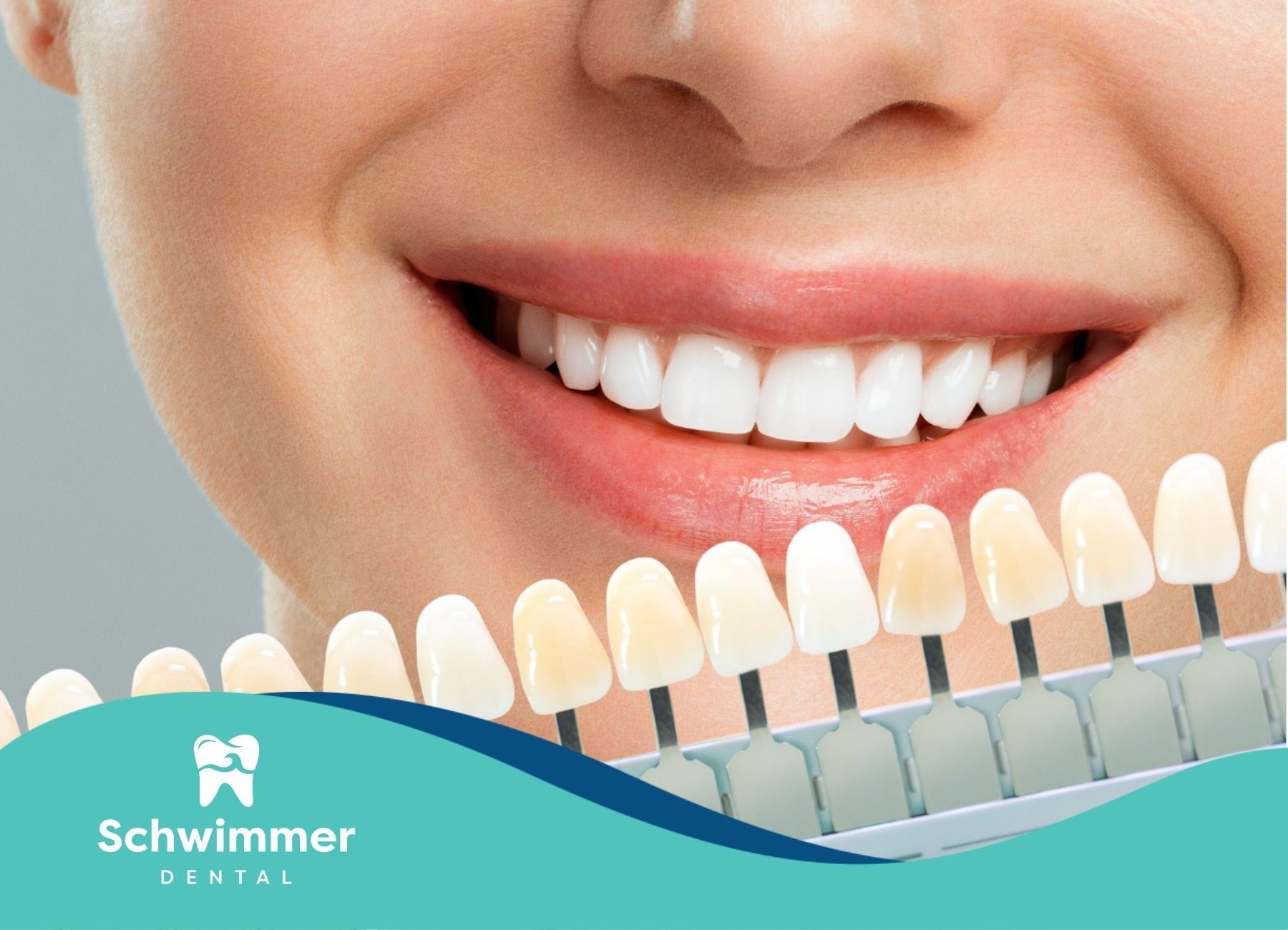Managing Dental Implant Nerve Damage Concerns
Understanding Dental Implant Complications
Getting dental implants might seem like hitting rewind on your smile, bringing back those pearly whites you miss. But just like any medical gig, it's not all sunshine and rainbows. You've got potential hiccups to think about, especially something a bit intimidating: nerve damage. If you’re looking to dive deeper into dental implant nerve damage, here’s the stuff you should know.
Risks and Impacts
Not all complications pack the same punch. With implants, you could be looking at an inconvenience or a head-scratcher that messes with your day. Let’s talk nerve damage. It happens during the procedure sometimes, leading to weird feelings or pain in your mouth. Yep, not a nice deal at all. This sensation change can throw a wrench in your regular routines and even tamper with your self-confidence.
The lower jaw, in particular, is like a nerve central. That inferior alveolar nerve doesn't play around and is more prone to getting in harm's way. So, precision and planning by your doc? Super key. New tech, like 3D scans, offers them the tools to take the scenic route, keeping nerves in mind during surgery.
Folks, if you were wondering what nerve damage might tag along with, here’s a list:
- Lips, chin, or tongue not feeling right
- That pesky pain by the implant
- Taste buds playing tricks, or feeling funny
These can seriously mess with your groove, so knowing and fixing them quick is a priority.
Prevalence of Complications
Now, don’t lose sleep over nerve damage – it's not party-crashing too often. Around 1% of implant seekers might meet this unwanted guest. Just means if there are 100 of us getting implants, maybe one will face this glitch, with older folks having a slightly bigger dice roll.
Yet, nerve damage isn’t the only bummer. There’s infection, bone giving up some ground, and even allergies that want their say. Knowing these can steer you right when pondering dental solutions.
| Complication | Prevalence |
|---|---|
| Nerve Damage | 1% |
| Infection | 5-10% |
| Bone Loss | 5-10% |
| Allergic Reactions | 1-2% |
If you’re curious to dive into the symptoms and telltale signs of these curves in the road, don’t be shy! Check out our reads on dental implant infection symptoms, dental implant bone loss, dental implant failure signs, and allergic reactions to dental implants.
Getting a hang of these risks upfront and knowing how often they happen is like having a map before a road trip. This lets you spot detours early and ensure your dental ride is smooth sailing. Smart choices, ace skills from your doc, and snazzy tech gear are your co-pilots in keeping things on track.
Nerve Damage in Dental Implant Surgery
Causes and Symptoms
Getting a dental implant? There's a slight chance of nerve trouble, especially when it comes to the lower jaw's inferior alveolar nerve. This happens to a few folks—around 0.6% to 5% of them. Why does it happen? Check out these reasons:
- Botched Placement: If the implant's not where it should be, it might mess with the nerves.
- Surgical Goofs: Oops! Going too deep with the drill can irritate or injure nerves.
- Brittle Bones: Weak bones, thanks to conditions like osteoporosis, might not support the implant well.
How do you know there's a nerve issue? Look out for these:
- Feeling Numb: Losing sensation in your lips, chin, or gums.
- Tingles and Burns: Those weird tingling or burning feelings that can range from "Oh, that's odd," to "Make it stop!"
- Ongoing Ache: Pain that sticks around or comes and goes.
- Speech and Chew Problems: Talking or chewing might get tricky due to the numb feeling or tight muscles.
Recovery and Treatment
Getting back on track after nerve damage during dental implant surgery is different for everyone. Spotting the problem early and getting it treated quickly is key to bouncing back. Here's what might be in store:
Treatments:
- Medications: Doctors might prescribe stuff like corticosteroids to ease the pain and swelling.
- Physical Therapy: Special exercises could help the nerves wake up and heal.
- Surgery: In bad cases, a bit more surgery might be needed to fix things up.
Recovery Timeline:
| Timeframe | What to Expect |
|---|---|
| First Month | Get checked out and start any needed treatment |
| 1-3 Months | Watch for any feeling or movement coming back |
| 3-6 Months | Hopefully, things are mending and more therapy continues |
| 6-12 Months | Most folks feel a lot better; if not, more help could be needed |
Picking the right surgeon and keeping up great dental care can dodge these kinds of problems. In case nerve issues pop up, learning what to do by checking out dental nerve damage fixes can help keep your mouth in tip-top shape after implants.
Factors Contributing to Dental Implant Failure
Understanding what makes dental implants unsuccessful is vital for those wanting to fix their smile, including loved ones, older folks, and dental experts. It helps people make smarter choices about their dental care.
Infection and Smoking
Infections are a major culprit for dental implant hiccups, often starting right where the implant's placed. Poor mouth care, slip-ups during surgery, or existing health issues can raise infection risks.
Put down the smokes if you’re considering implants.
Smokers face a higher risk of implant fumbles, with failure rates becoming as high as 20 percent. Lighting up messes with the blood flow in your gums, slowing healing and inviting trouble. Quitting at least a week before surgery and staying off for a couple months after can really cut down the odds of things going south.
| Risk Factor | Failure Rate (%) |
|---|---|
| General Population | 5 - 10 |
| Smokers | Up to 20 |
Medical Conditions and Bone Health
Certain health problems can throw a wrench in the works for dental implants. Autoimmune diseases, rheumatoid arthritis, and diabetes slow down healing and stop that all-important osseointegration, which is fancy talk for the implant bonding with your jawbone. Meds for osteoporosis or long-term health issues could also stall recovery.
| Condition | Impact on Healing |
|---|---|
| Autoimmune Diseases | Slower Healing |
| Rheumatoid Arthritis | Prevents Osseointegration |
| Diabetes | Sluggish Recovery |
Healthy bones matter a lot. Not having enough bone density or volume could mess with how stable and durable your implant is. Osteoporosis and bad gum disease can make bones shrink, meaning you might need grafts or other tweaks before the implant can go in smoothly.
Knowing all these bits helps patients and dentists plan things out to get those implants in and working well.
Preventive Measures for Implant Complications
Dodging the pitfalls of dental implant nerve damage means blending tech magic with surgical know-how. Here’s a peek into those preventive tricks.
Cutting-Edge Technologies
Modern imaging tools are champions in steering clear of glitches during dental implant surgery. Gadgets like cone beam scanner 3D imaging, digital x-rays, and the X-Guide navigation system lay down the groundwork for spot-on implant placement.
- Cone Beam Scanner 3D Imaging: With its 3D jaw snapshot, this tech offers a sneak peek into nerve spots and bone layouts. Such visual insights guide the where, how deep, and at what tilt to place the implants.
- Digital X-Rays: These x-rays dish out sharp pics, minus heavy radiation doses, making them a win-win for both patient care and a risk-free experience.
- X-Guide Navigation System: This tool acts like a GPS for surgeries, showing real-time paths for the implant. It cuts down nerve risks with its precise tracking.
Using such tech makes dental implanting safer and more accurate, trimming down the chances of things going wrong.
Surgical Smarts
Pairing tech with nimble surgical moves is key in dodging trouble. Crafters of dental arts need a game plan, careful moves, and a knack for tackling mid-surgery hiccups. Here are some savvy methods:
- Nailing Pre-Surgery Planning: Using high-tech imaging, surgeons map out the nerve's hideouts. Getting this part right is like having a treasure map, helping avoid nerve traps.
- Mindful Drilling: During the act, slow and steady is the motto. Surgeons are on alert to stop if they sense they’re near a nerve.
- Prime Implant Positioning: Botching up the implant's spot can lead to issues. It pays to have a seasoned pro who knows jaw jigsaws like the back of their hand.
- Spotless Surgery Zone: Keeping things squeaky clean in the OR beats bacteria at their own game, preventing infections like peri-implantitis which can botch implants.
- Health Check-Up: Conditions like diabetes and bone issues can slow healing and mess with success rates. A health check and control are must-dos pre-surgery. For more, see our piece on dental implant bone loss.
Melding cutting-edge tech with slick surgical skills not only cuts the risk of dental implant failure, but also sidesteps nerve damage. Nailing the plan, the execution, and the on-the-go guidance are the heavy hitters behind successful dental implant surgeries.
Recognizing Dental Nerve Damage
Getting dental implants might improve that smile, but sometimes they come with a little surprise: nerve damage. Spotting this early can save you a lot of grief later on.
Symptoms and Diagnosing
Dental nerve damage isn’t always shouting for your attention. It sneaks in with some signs you've got to watch out for:
- Ongoing pain that just won’t quit
- The "Ow!" factor when you sip your favorite hot or cold drink
- A strange tingle or nothing at all in parts of your face
- Trouble munching your food or getting tongue-tied
These aren't random. They pop up because of things like trauma, infection, or the implant cozying up to places it shouldn't be. Dentists have a toolkit for figuring this out. They listen to your story, take a close look, and rely on some high-tech pictures—think X-rays and CT scans—to see what's up.
A full check can reveal if your lips, chin, or tongue feels amiss. Those cool diagnostic images give a snapshot of the implant and nerve zones, highlighting where things might be wrong.
| Symptom | What It Means |
|---|---|
| Persistent Pain | Nerve under pressure or hurt |
| Sensitivity | Could be those nerves inflamed |
| Tingling or Numbness | Possible nerve irritation or harm |
| Trouble Chewing/Speaking | Nerves causing motor hiccups |
Treatment Options
When nerve trouble pops up, the fix depends on how bad and why it's happening. Several go-to treatments help tackle this:
- Medications: Perk up with painkillers and anti-swelling meds to ease the hurt. For nerve pain, snazzy meds like gabapentin could be on the list. Plus, the B-vitamin family has your back when it comes to nerve health.
- Pain Relief: Something like ibuprofen
- Nerve Pain Help: Gabapentin, Pregabalin
- Bump Up B-Vitamins:
Supplements for nerve support
- Surgical Moves: When meds don't cut it and nerves are seriously annoyed, going under the knife might be the last resort. They might untangle a compressed nerve or even shuffle the implant. Though surgery can offer relief, it's a tough road and fixes aren’t written in stone.
- Cool New Treatments: Laser therapy's hitting the stage with potential to wake up nerve healing and reduce pain.
- Physical Therapy and Acupuncture: These friends can chip in with pain relief and nerve function tweaks.
Dealing with implant-caused nerve scrambles calls for a team. Dental experts and patients should team up to tackle all angles of the problem. With steady checks and smart plans, those nerve woes can be managed, helping folks lead a fuller life.
Long-Term Complications and Prevention
Dental implants might be the go-to fix for missing teeth, but they're not entirely issue-free in the long haul. Knowing what could go wrong and how to prevent it is key for keeping that smile healthy.
Inflammation and Stability
If irritation pops up around your implant, it's not something to ignore. It might be peri-implantitis—fancy talk for a nasty bacterial attack that makes your gums swell and can lead to bone loss around the implant. You'll know it's trouble if your gums are angry, your teeth look like they're getting longer (that's gum recession), or you're having sinus issues.
For implants to stay put, they have to get cozy with your bone—called
osseointegration. A wiggly implant might be due to weak bone structure, too much chomping pressure, or bad placement. If your implant is shaking hands with your jaw too roughly, it's gonna be uncomfortable, mess with your eating, and might even have to be redone.
| What Could Go Wrong | Signs to Watch For | How to Dodge It |
|---|---|---|
| Peri-implantitis | Red, swollen gums, bone loss | Keep up with those cleanings, dentist visits, and hygiene |
| Gum Recession | Gums backing away from implant | Get those gums checked regularly |
| Sinus Woes | Feeling bloated or pressurized | Choose implant spots wisely, steer clear of sinuses |
Certain health conditions like autoimmunity, smoking habits, diabetes, or weak bones (thanks, osteoporosis) can mess with healing and keep implants from settling well. Avoiding these is crucial to making those implants stick.
Monitoring and Maintenance
Keeping tabs on your implants can really prevent the issues from stacking up. Regular dentist visits are a must for catching problems early on. If your implant's still angry, aching, wobbly, or pushing out pus, it's waving a big red flag. These are clues you can't overlook and need quick dental attention.
| Task List | When |
|---|---|
| Get a professional cleaning | Every 6 months |
| Visit your dentist | Every 6 months |
| Keep an eye on the implant area | Every day |
Good dental habits are your best friends here: brush those chompers, floss like a boss, swish with antiseptic rinse, and dump those smoking and binge drinking habits. Staying on top of your oral health keeps the gums and bones happy, which are crucial for implants to hold their ground.
SOURCES:
https://www.healthline.com/health/dental-implant-problems
https://www.sciencedirect.com/science/article/pii/S1991790224002460
https://www.mayoclinic.org/tests-procedures/dental-implant-surgery/about/pac-20384622



